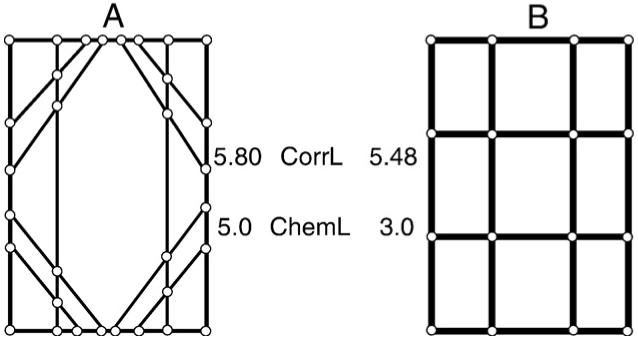Fig. 2.

Structures A and B have similar bone volume fractions yet vastly different network topologies for transferring load from top to bottom. Load applied to the top surface can only travel to connected nodes (open circles) in the network located either horizontal to or below and cannot travel to a node it has been to previously. Compared to structure B, structure A has higher correlation length (average number of nodes crossed along paths connecting top and bottom surface; CorrL) and chemical length (fewest number of nodes crossed along paths connecting top and bottom surface; ChemL). Thus, structure A has a higher load sharing capacity.
